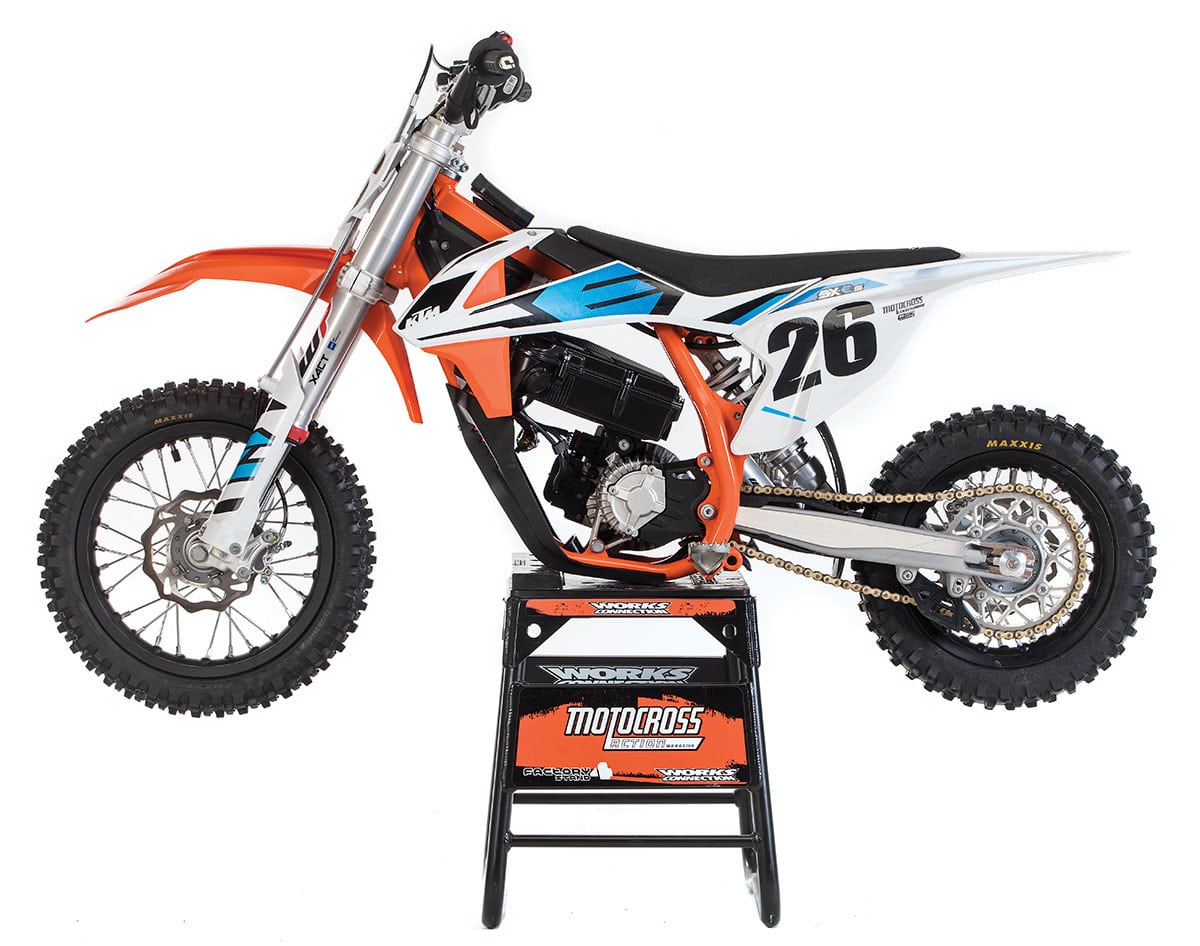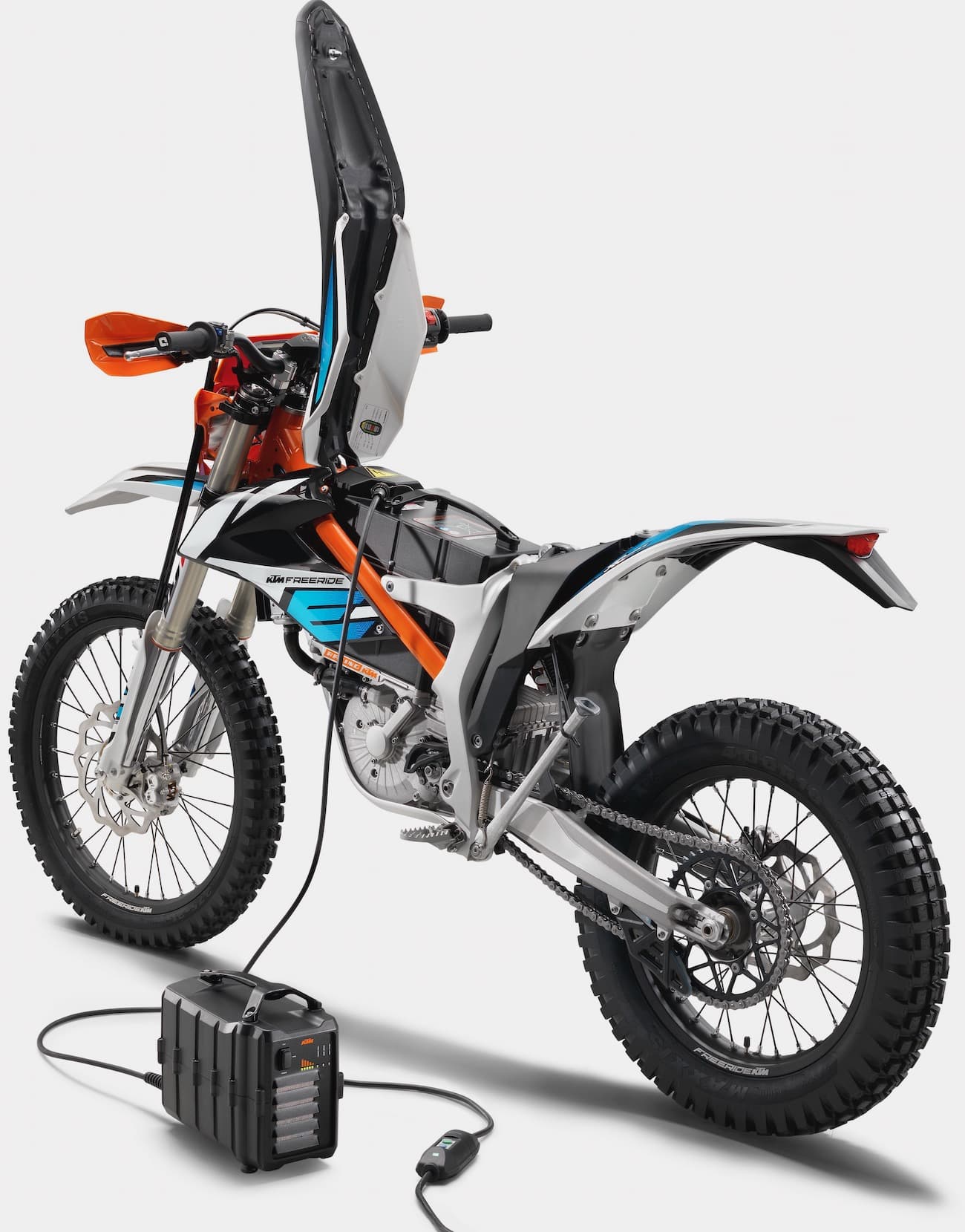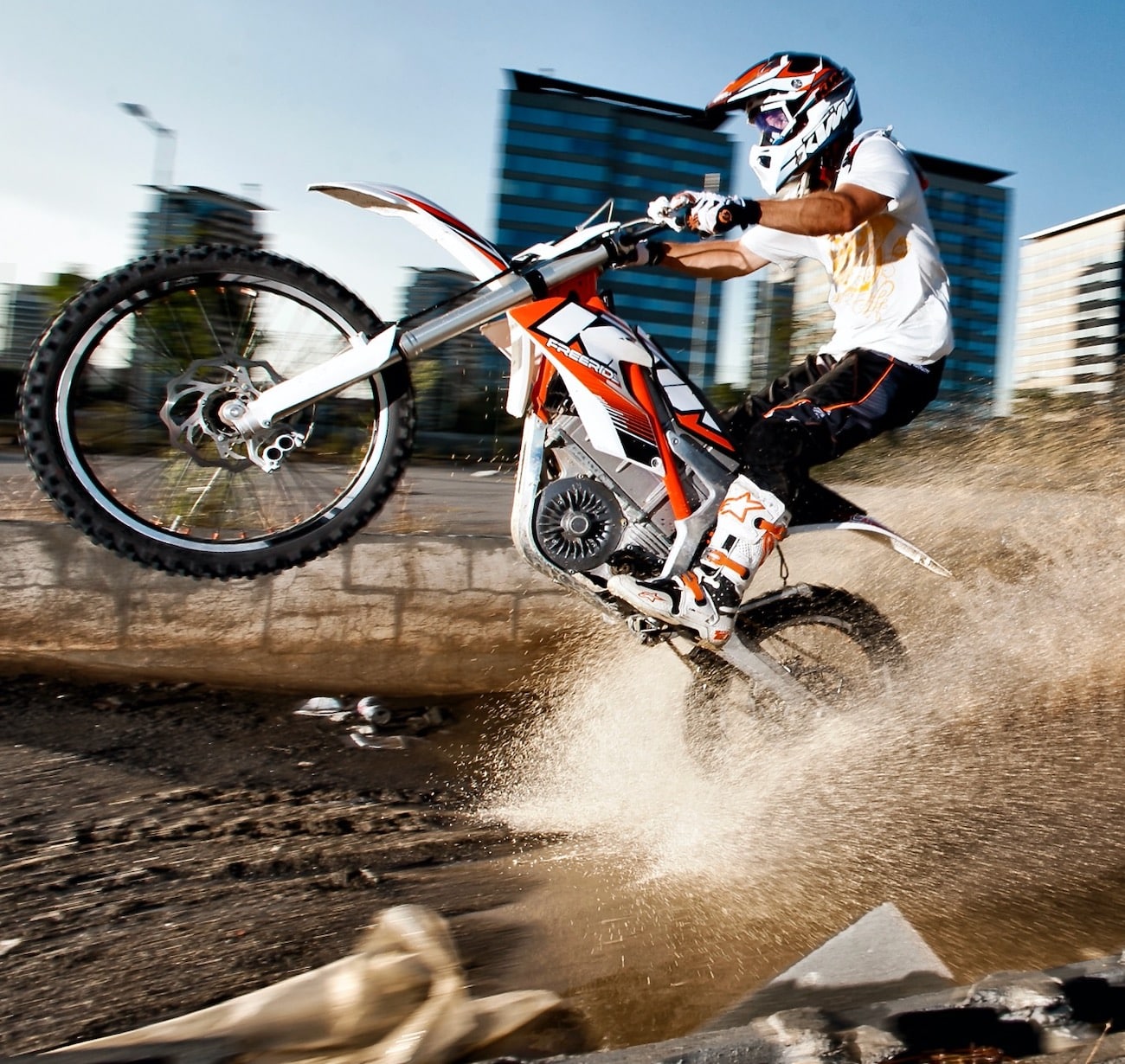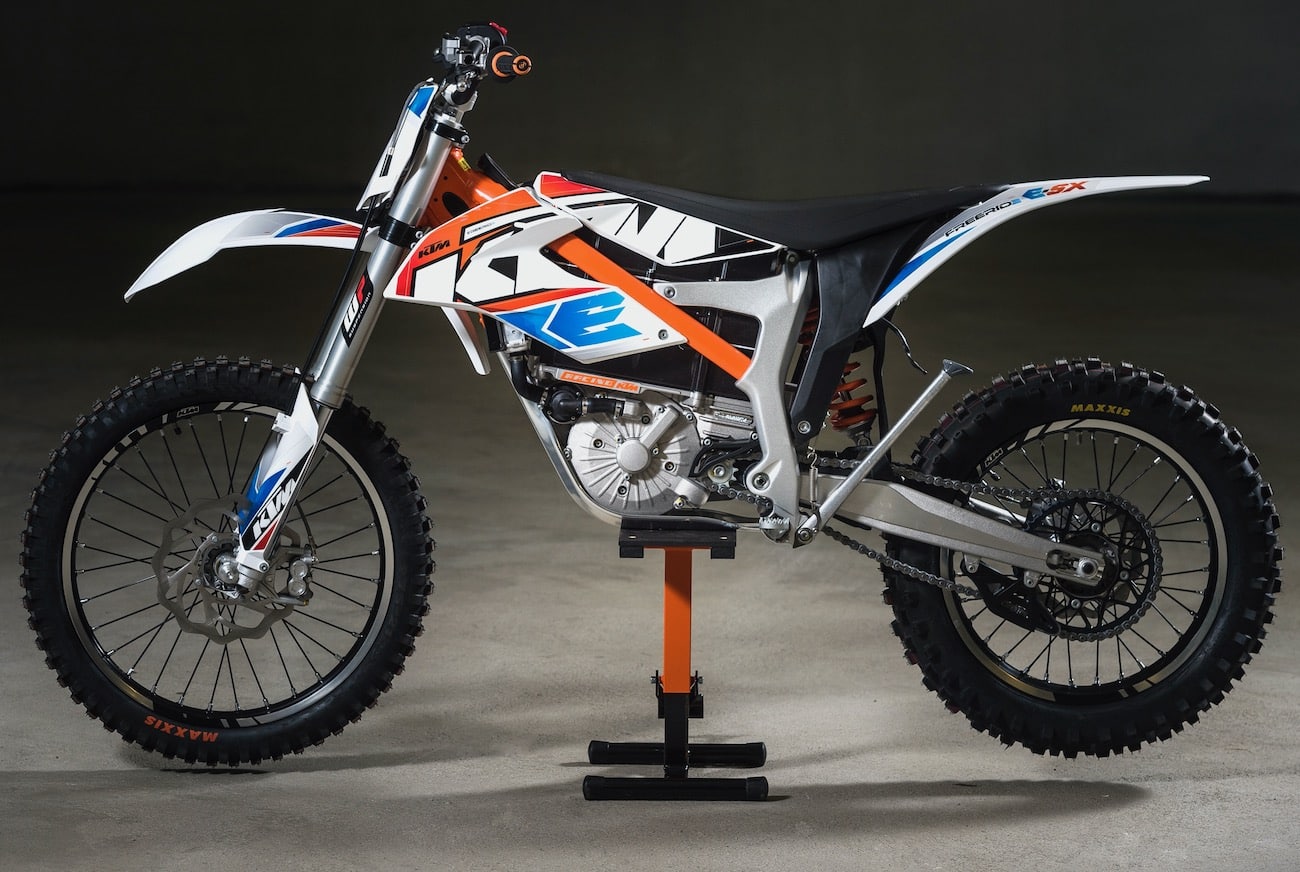TEN THINGS ABOUT KTM’S ELECTRIC BIKE ADVANCEMENTS

The KTM Freeride E-XC has been a test mule for over a decade with limited production runs.
(1) Electric. The MXA wrecking crew doesn’t like the idea of electric bikes taking precedence over internal combustion engines; however, we aren’t allowed to turn a blind eye when motorcycle manufacturers start producing them. The new Stark Varg caused a stir, but we have seen electric prototypes from every Japanese brand. But KTM has been working on electric for over a decade
(2) History. KTM first showed off its electric Freeride E-XC way back in 2010, but they didn’t sell it right off the bat. Eventually, KTM began to sell it in Europe, but not the USA, which is every manufacturer’s biggest market. The KTM Freeride came to the USA in 2014, and since then, KTM has quietly been in the electric motorcycle business (with a pilot program they set up for only ten dealership across the nation to make the Freeride available. They kept it low-key to learn about the pros and cons of electric motors, since internal combustion engines have remained at the center of the KTM limelight.
(3) Development. By keeping the Freeride E-XC on the down low, KTM hasn’t enraged the loud majority of consumers who don’t like the idea of e-bikes; however, when the time comes, KTM will have a vast amount of electric experience, dating back to 2010, to build on.
(4) E-KTM. MXA never tested the KTM Freeride E-XC, but we have ridden its electric SX-E 5 mini bikes, and the youngest MXA test riders (specifically Daryl Ecklund’s 5-year-old son, Caselli) loves them. In the July 2021 issue of MXA, KTM’s North American CEO, John Hinz, stated, “There’s a global macro trend in electrification, and we see an opportunity to bring that electrification into our sport and grow the sport of motorcycling. We started with mini bikes, and we think that’s the right spot to start. You’ll see KTM continue to grow from a young rider’s perspective on up.” He continued, “But, make no mistake about it, we are committed to four-strokes and two-strokes. Electrification is part of the future, but it is not a replacement. It’s a new technology to for a new generation of riders.”
 The KTM SX-E 5 electric Pee-Wee could be ordered with a lowering kit to bring the seat height down six inches. Expect KTM electric 65cc machines and, at some point, electric 85s.
The KTM SX-E 5 electric Pee-Wee could be ordered with a lowering kit to bring the seat height down six inches. Expect KTM electric 65cc machines and, at some point, electric 85s.
(5) SX-E 5 Mini. Unlike full-scale electric bikes, the SX-E 5 mini bikes are generally welcomed by most seasoned dirt bike riders because they realize the benefits of e-bikes for our sport’s youngest riders. Normal 50cc Pee-Wee two-strokes are finicky and difficult to maintain for parents who aren’t mechanically inclined. Plus, they sound like annoying bees when riding through the pits.
 Flip the seat up and charge the battery. Expect KTM to invest in their own battery manufacturing plant to avoid global shut downs.
Flip the seat up and charge the battery. Expect KTM to invest in their own battery manufacturing plant to avoid global shut downs.
(6) Details. Retailing for $11,099, the Freeride E-XC last received major updates in 2018. KTM claims a maximum of 24.5 horsepower (18kW) and 31 pound-feet (42 N/m) of torque. It requires 110 minutes to fully recharge the battery, which provides 90 minutes of riding time (that is 50 percent more than the 2017 model). Plus, the lithium-ion battery can be swapped out. The bike has WP XPlor suspension with 43mm air forks and a PDS shock. It also has disc brakes operated by a front brake lever on the right and a rear brake lever on the left and three different ride modes—Economy, Enduro and Cross.
(7) Purpose. The KTM Freeride E-XC isn’t fast enough to be truly competitive against serious bikes on a motocross track. It’s intended for free-riding on tight technical tracks and trails in the backyard or for exploring riding spots that are near urban areas where a loud combustion engine wouldn’t be welcomed. It’s also beneficial for teaching first timers how to ride. They won’t have to worry about shifting, using the clutch or stalling.
 This KTM press photos is staged to show that you could ride an electric dirt bike in an urban environment without any noise complaints.
This KTM press photos is staged to show that you could ride an electric dirt bike in an urban environment without any noise complaints.
(8) Training. KTM 250 factory rider Max Vohland was the first top-tier motocross racer to openly use the electric KTM Freeride E-XC for training purposes. Max has spent many hours riding the bike in the sandy riverbeds near his home in Northern California on tracks close to urban neighborhoods where riding would normally be frowned upon if he were on a two-stroke or four-stroke.
(9) Unified batteries. On March 1, 2021, it was announced that KTM, Yamaha, Honda and Piaggio had entered an agreement to work together on their electric future, specifically to create a unified swappable battery system between the brands (and the Japanese brands have also formed their own battery consortium).
 The Freeride’s frame is a hybrid of chromoly steel and aluminum. Since there is no need for a gas tank or airbox, packaging can be designed for very lightweight (needed to offset the battery weight).
The Freeride’s frame is a hybrid of chromoly steel and aluminum. Since there is no need for a gas tank or airbox, packaging can be designed for very lightweight (needed to offset the battery weight).
(10) Maintenance. One big selling point for electric bikes is the limited amount of maintenance required. All an owner has to do is charge the battery, check the tire pressure and oil the chain.
EDITORS NOTE: After this article was published in the July 2022 issue of Motocross Action, the KTM/Husky/GasGas group announced their plans to introduce 20 new electric bike models in the next two years. Read more about it by clicking here.






Comments are closed.